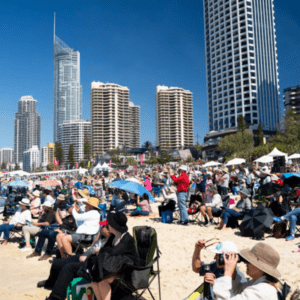
Visa’s cashless solutions offer the freedom to pay anywhere in the world while helping you get a competitive exchange rate when you pay in local currency. Visa has announced the findings of the payment network’s comprehensive look at travel and tourism in 2017.
Visa’s Global Travel Intentions (GTI) Study highlights various parts of the travellers’ journey and found a key motivator for travel is stress relief. The Study also uncovered certain aspects of travel can lead to anxiety and stress, including getting, carrying and exchanging cash. Visa’s cashless solutions offer the freedom to pay anywhere in the world while helping you get a competitive exchange rate when you pay in local currency. While paying in one’s home currency may seem familiar, those purchases, when made overseas, can usually assess conversion-related commissions and overall price markups.
2018 macro trends in travel
In addition to examining the motivations and planning tactics, the GTI Study of outbound travellers from 27 countries and territories also uncovered a number of macro trends expected to continue into 2018:
- Trips are getting shorter:ÊThe global average is now eight nights, down from 10 nights on average in 2013.
- More trips abroad: Globally, people are planning to take more trips in the future, from an average of 2.5 trips in the past two years to 2.7 trips in the next two years. The Americas lead the pack in number of trips in the past two years, taking an average of 3.2 trips in 2017.
- Technology is helping some travellers better navigate their destinations:Ê88 percent of travellers gained online access while abroad. Almost half (44 percent) use ride-sharing apps to get around once they are on the ground.
- Multi-destination:Ê11 percent of global travel includes visits to multiple countries.
- Japan, the United States and Australia are the most visited countries:ÊJapan has overtaken the United States as the most popular destination for global travellers in the past two years. Regional preferences prevail, though, with travellers in the Asia Pacific region leaning heavily toward Japan as a travel destination. American travellers prefer continental Europe, although Mexico, Canada and Japan are also highly desirable.
- Top spenders:ÊSaudi Arabians are the top spenders when it comes to what travellers spend on their entire trips, including the booking stage as well as expenditures at the destination, with Chinese, Australians, Americans and Kuwaitis rounding out the top five.
Simplifying payment abroad
Travelers are increasingly using technology to plan their trips and navigate their destinations Ð 83 percent of travellers used technology for this purpose in 2017 compared to 78 percent in 2015. Yet the majority of them are still decidedly analogue when it comes to making payments internationally.
While many travellers use cards while on vacation, most (77 percent) still prefer to use cash when making purchases. Using a Visa card to pay in local currency could help international travellers get a more competitive exchange rate and possibly help them avoid being hit with hidden currency conversion fees when they get home. The Study also found the following themes related to the use of cash while travelling internationally:
- Cash causes anxiety:ÊTravelers cited loss of cash or theft as a top money concern while on trips.
- Big spenders:ÊThe average global traveller spends US$1,793 per trip, yet the global median amount of cash brought to destination globally clocks in at a whopping US$7781.
- Trade-off:ÊIn order to travel with that much cash, 72 percent of people prepared their foreign currency prior to their departure date.
- Telling sign:ÊOnly slightly more than one in ten people made an ATM withdrawal at their destination. Security at ATMs is one area of concern affecting this statistic, cited by nearly one in five travellers as a barrier to using an ATM. Travelers from Europe, the Middle East and Africa are, however, more likely to withdraw cash during vacation compared to those from other regions.
- Leftover cash:ÊA whopping 87 percent have leftover cash after their trips, but only 29 percent convert it back to the currency they can actually use at home. The global median leftover amount is US$123.
ÒWe are excited to see the desire for global travel grow as technology becomes integral in every stage of the travellers’ journey,Ó said Lynne Biggar, Chief Marketing and Communications Officer, Visa. ÒUsing your Visa card abroad means a safe, secure, seamless and convenient experience, without the worry of carrying cash. As more people travel internationally in 2018, we look forward to helping travellers make the most of their trips.Ó
Tips for stress-free payment while travelling
- Use your Visa card toÊpay in Òlocal currencyÓÊto get a competitive exchange rate and help avoid getting stuck with hidden currency conversion fees when you get home.
- Use a credit or debit cardÊfor purchases. Visa offers security, convenience and ease when paying abroad. It may be considered safer than carrying cash and is backed byÊVisa’s Zero Liability Policy2, which states accountholders won’t be held responsible for unauthorized charges on their account.
- Whenever possible, pay through aÊchip-activated terminalÊwhen using your credit or debit card for enhanced security.
- Look for theÊVisa or PLUS logo at any point-of-sale terminal or ATMÊto ensure these international payment cards are accepted.
More GTI findings
The average global traveller spends US$1,793 per trip. Travelers expect to spend more in upcoming trips, with the highest likely increase in the Asia Pacific.
|
Intended spend for next leisure travel versus previous trip (Median US$)* |
||||||||||||
| Region | Last trip | Next trip | Percent change | |||||||||
| Global | US$1,793 | US$2,443 | 36.25% Increase | |||||||||
| Africa & Middle East | US$2,666 | US$2,666 | 0% Increase | |||||||||
| Asia Pacific | US$1,677 | US$2,443 | 45.68% Increase | |||||||||
| Europe | US$1,174 | US$1,409 | 20.02% Increase | |||||||||
| North and South Americas | US$2,248 | US$2,840 | 26.34% Increase | |||||||||
Among the top global spenders, travellers from Australia, China, Kuwait and the United States remain optimistic when it comes to spending for their upcoming overseas travel. Saudi Arabian respondents are still the number one spenders but are projected to spend less on their next international trips.
|
Top five global markets Ð intended spending amount for next international trip (Median US$)** |
|||||||||||||||||||
| Saudi Arabia | China | Australia | United States | Kuwait | |||||||||||||||
| Next trip | US$4,800 | US$4,034 | US$3,529 | US$3,500 | US$3,474 | ||||||||||||||
|
Top five global markets Ð amount spent on last international trip (median US$)* |
|||||||||||||||||||
| Saudi Arabia | Kuwait | China | Australia | UAE | |||||||||||||||
| Last trip | US$5,333 | US$3,143 | US$2,988 | US$2,745 | US$2,722 | ||||||||||||||
For more information about Visa’s Global Travel Intentions Study visitÊVisa.com/TravelStudy.














